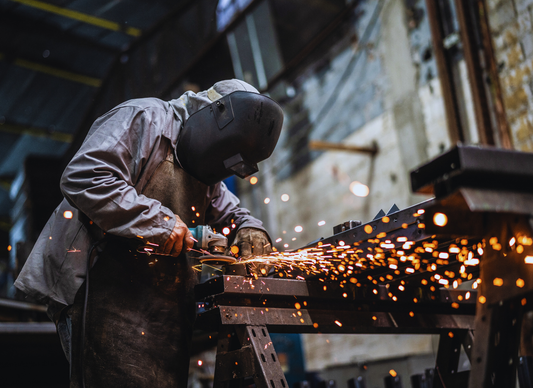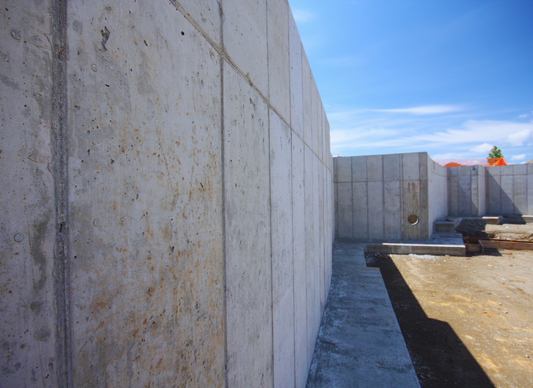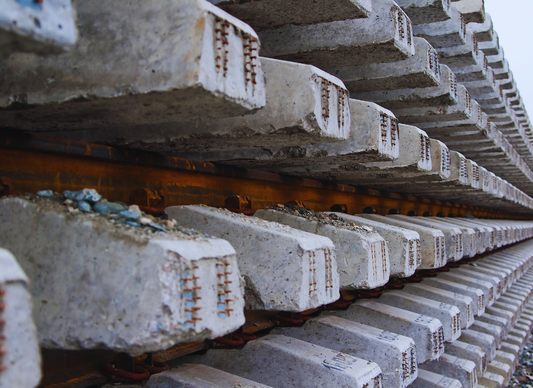Sloped backyards present some special challenges—limited drainage, soil destabilization, and unusable terraces—but a well-placed retaining wall can transform a slope into a functional, stunning outdoor living area.
Low to moderate slopes (up to about 3 ft of elevation difference) are often within budget using gravity or segmental systems, but steeper slopes and taller walls usually call for reinforced or anchored designs. Budget, soil condition, drainage requirements, and aesthetic needs will dictate the best solution.
This article considers key things to take into account and seven common wall types from timber to modular block to gabion and mechanically stabilized earth (MSE) systems to help homeowners decide on the most suitable retaining wall for their sloping backyard.
Key Factors to Consider
Height and Slope
Your wall slope and height requirements are important factors to consider. Gravity walls rely on self-weight to help them withstand soil pressure and may be used up to a wall height of around 3-4 ft wall height. Cantilever, MSE, or anchored walls provide stability with reinforcement for steeper slopes and walls higher than 4 ft.
Soil Conditions and Drainage
Clay soils retain water and contain higher lateral pressure, whereas sandy soils drain but experience movement. Proper drainage behind any retaining wall serves to reduce hydrostatic pressure; gravel backfill and perforated drainpipes are typical examples.
Budget and Installation
Materials range from affordable pressure-treated wood to high-performance reinforced concrete. Do-it-yourself segmental block walls sacrifice both price and ease of installation, while poured-in-place or engineered walls require trained proficiency and higher budgets.
Aesthetics and Durability
Natural stone and gabion walls have a natural look, but may command top-of-the-range installation costs. Concrete block wall systems come with a multitude of different texture and colour options, whilst timber walls, although on the cheaper side, may rot over time unless suitably protected.
Common Retaining Wall Types
1. Gravity Walls (Concrete Block, Stone, Timber)
Their retention is based only on weight, and they represent the simplest retaining structure of them all.
-
Concrete block: Dry-set or mortared, they are long-lasting and allow for dry-setting for flexibility. Dry-stacked stone walls—without mortar—can move slightly and have better drainage but require selective stone choice and building.
-
Wood: Light, cheap pressure-treated pine or fir timbers will suffice for grading walls of less than about 3 ft. Timber, though, is susceptible to insect attack and rot after a while and is not as durable as concrete or stone.
2. Reinforced Concrete (Cantilevered Walls)
Cantilever walls have a thin stem and base slab for the transfer of weights from the soil at the heel. Economical for medium walls with an allowable height of ~8 ft range and would react well against higher surcharge loads. A competent professional must ensure design and construction for structural integrity.
3. Steel/Vinyl Sheet Pile Walls
Thin interlocking sheets are driven into the soil to create a wall. Sheet piles are good for spaces with constraints and high water-table situations. The steel interlocks resist lateral loads but, unless special coating is applied, the corrosion can be an issue in aggressive soils.
4. Segmental Block Walls (Modular)
Also called Segmental Retaining Walls (SRWs), these consist of various interlocking sections. These walls are very popular for sloping yards because of:
-
Ease of installation: No mortar required, hence suitable for DIY activities for walls up to ~4 ft.
-
Aesthetic flexibility: Available in different shapes, colours, and textures to suit any landscape.
-
Structural integrity: SRWs with geogrid reinforcement become mechanically stabilized earth walls suitable for deep walls and steep slopes.
5. Gabion Walls
Gabions are baskets made of wire mesh filled with rock or recycled materials. They provide:
-
Good drainage: Permeable material eliminates hydrostatic pressure.
-
Rustic look: The natural stone infill blends with landscapes seamlessly.
-
Flexibility: Allows slight settlement without breaking.
Gabions are appropriate for slopes of moderate steepness and offer an environmental alternative where recycled aggregates are utilized.
6. Anchored Walls
For wall heights above ~8 ft or if there is a heavy surcharge (e.g., a driveway), tiebacks (or anchors) drilled into the earth support the wall laterally. Anchored walls may be constructed of timber, sheet pile, or concrete panels but need to be professionally designed and installed.
7. Mechanically Stabilized Earth Walls
MSE walls involve SRW facing units with horizontal steel strips or geogrids as soil reinforcements that create a composite gravity wall. MSE walls are normal for commercial and municipal applications, but may be reduced to size for residential applications taller than 4 ft or on highly sloping sites.
Choosing the Right Wall for Your Sloping Backyard
-
Lower Slopes (<3 ft height): Gravity walls—dry-stacked block or timber—are most cost-effective.
-
Moderate Slopes (3–6 ft height): Segmental block walls (with or without geogrid reinforcement) or gabion baskets offer a good compromise between performance and aesthetics.
-
Steep Slopes (> 6 ft height): Cantilevered concrete walls, sheet piles with anchors, or MSE systems are adequate for stability.
-
Drainage and Soils: Perforated drains should always be placed with gravel backfill behind the wall, and aggressive soils require corrosion-resistant material to be used.
Conclusion
Sloped backyard appearance and curb appeal benefit greatly from retaining walls. Slope steepness, wall height, soil, budget constraints, and aesthetic considerations help homeowners choose from gravity, cantilever, sheet pile, segmental, gabion, anchored, or MSE systems.
DIY-friendliness, budget, and appearance at their best are provided for most residential slopes under 6 ft by segmental block or gabion walls. Taller, steeper walls require engineered solutions—engineered concrete, anchored piles, or MSE designs—to ensure long-term stability.
No matter which one you choose, proper drainage, good material, and professional design (for engineered systems) will see a retaining wall that is strong and appealing for decades to come.




